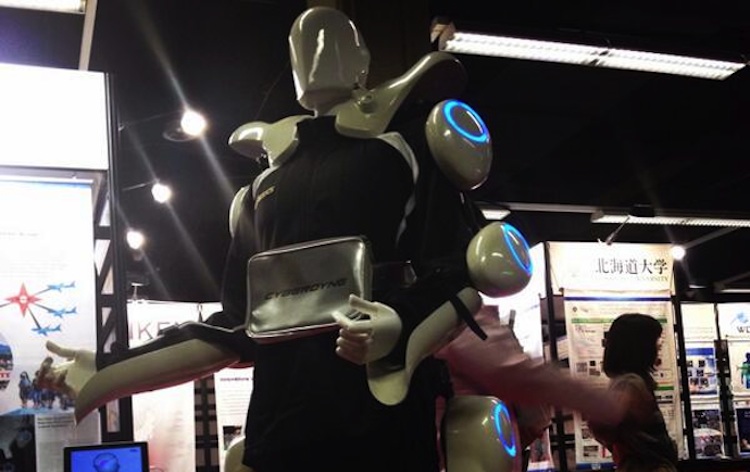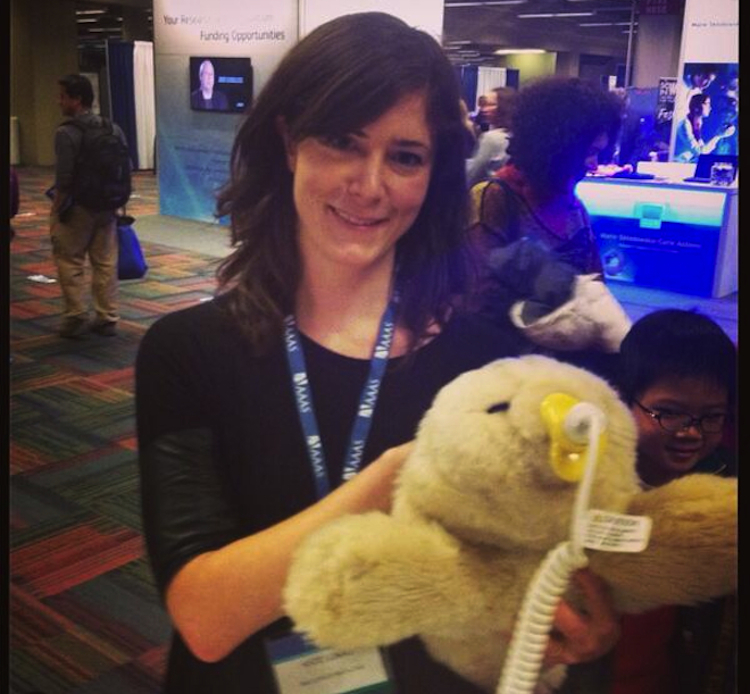The robots are coming
Kate Lunau checks out the two robotic technologies that could be coming soon–one cool, one cute
Share
Kate Lunau is in Chicago covering the 2013 annual meeting of the American Association for the Advancement of Science (AAAS), where some of the world’s finest brains and the celebrities of science mix, mingle, and share their latest ideas. From Feb. 14 to 18, she’ll be blogging and tweeting from Chicago on some of the latest—and most exciting—research. Follow her @katelunau or with the hashtag #AAASmtg!
At the American Association for the Advancement of Science today, I checked out two Japanese robots—one of them a fluffy, cuddly pet, the other an exoskeleton that helps to power human limbs.
HAL
Not to be confused with Stanley Kubrick’s HAL 9000, this powered exoskeleton is billed as the world’s “first cyborg-type robot.” It can help people with limited mobility to walk again—and one day, it could expand on our natural capabilities. HAL (it stands for Hybrid Assistive Limb) uses detectors on the wearer’s skin to read brain signals that make the muscles move. HAL could be a boon for the elderly, and anyone whose mobility is impaired. (It’s not hard to imagine law enforcement and others thinking up some uses for this powered exoskeleton, too.) Given the name of its makers, Cyberdyne Inc., one might wonder if HAL’s creators were movie buffs – but apparently, it’s all purely coincidental.
PARO
It looks and sounds like a baby harp seal, but Paro is a cute, soft, wiggly robot, one that responds to being touched and held. Japan is a leader in social robots like Paro, partly out of necessity; its population is rapidly aging. This soft, light robot creates effects similar to pet therapy, without the need of bringing a dog (or a harp seal) into a hospital or nursing home. Paro is especially effective with kids and the elderly, including those with dementia. While there’s great debate about what role robots will play in caring for the elderly in the future, Paro’s already been in use in Japan and Europe for years. Soon enough, we’ll certainly see many more companion robots at the bedside.


